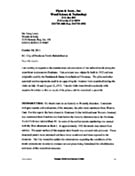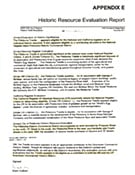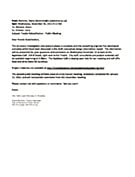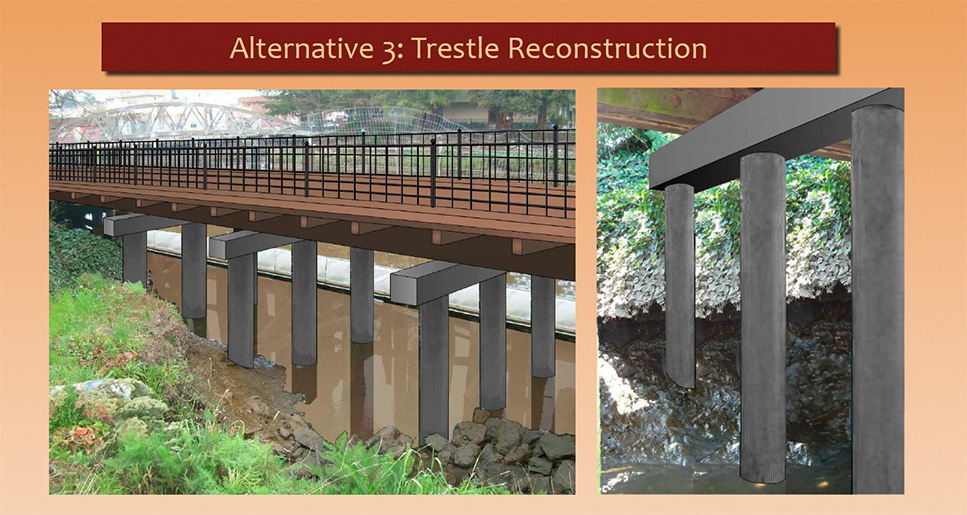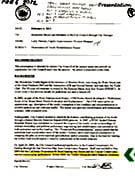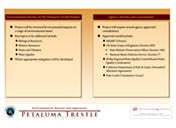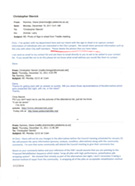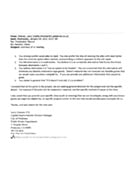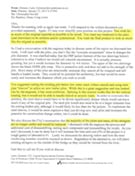Trestle History - 10/7/11 to 2/6/12
| Date | Event or Document | Image or PDF |
10/7/11 | Preservation Architecture determines Trestle is historic but this is never announced to the public. See part of their report below at November 2011 | See document at Nov 2011 |
10/14/11 | Wood report from Flynn & Assoc., Inc. - Wood Science & Technology, to Winzler & Kelly. Though dated 10/14/11 this report was not made available to public review until 2012
| |
11/1/11 | Chris protests to council members Theresa Barrett & Mike Healy that stakeholders have never been invited to participate as originally promised | |
November | Historic Resource Evaluation Report Mark Hulbert (Preservation Architecture). From Appendix E of Winzler & Kelly’s Conceptual Design & Plan Document
| |
11/30/11 | Stakeholders get their first opportunity to participate with invitation to the Apple Box Restaurant to see the three design Alternatives. | |
11/31/11 | Larry Zimmer tries to discourage Chris from attending the upcoming presentation to the City Council in February, 2012, re: the Trestle project, “we have your interests covered.”
|
|
12/1/11 | Legal notice of Apple Box meeting runs in Argus Courier | |
12/7/11 | Chris Stevick and Lauren Williams get preview of completed Alternatives (First time made public)
| |
12/8/11 | Second Legal notice of Apple Box meeting runs in Argus Courier |
| Date | Document or Event | Image or PDF |
12/12/11 | Lauren and Chris are invited as Stakeholders to the first presentation of Alternatives 1, 2 & 3, but with no opportunity for input | |
12/14/11 | Stakeholders attended the first and only public presentation of the Three Alternative plans at the Applebox Restaurant (at B St. & 2nd St., currently occupied by the Riverfront Café) that faces onto the Trestle.
| Letter 2/6/12
Power point slides used in presentation: |
12/15/11 | At the Applebox presentation attendees could sign up for further information. Chris photographed the sign-up sheets so he could contact all the stakeholders who attended the meeting.
| |
12/27/11 | Stringer report from the Wood Report of Flynn & Assoc., Inc - Wood Science & Technology to Craig Lewis of Winzler & Kelly (Later of GHD)
| |
1/4/11 | Letter from Larry Zimmer to Chris, summarizing Chris’s position at a meeting with Larry and Diane Ramirez around 12-21-11. Chris responds in detail in email dated 2-13-12 (see below)
| |
1/23/12 | Letter from Larry Zimmer to Chris Stevick In response to an earlier letter from Chris. In this email he tries to summarize Chris’s preferences for Trestle rehab, then points out problems with the various solutions under Alt 1.
| |
2/6/12 | Letter written by Larry Zimmer (Capital Improvements Division Manager, Public Works Department) to City Council members before the meeting of 2/6/12 began. It summarizes the presentation to be made and emphasizes the Staff preferences.
|
Trestle History - 10/7/11 to 2/6/12


